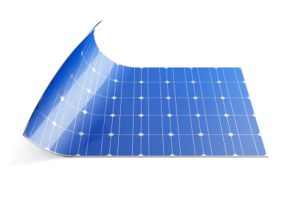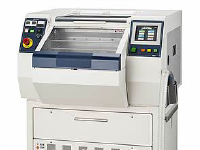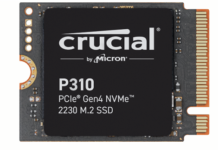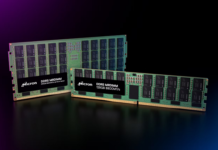
The areas of flexible and wearable electronics are two areas that are seeing a significant amount of growth and are expanding into many industries, with some applications adopting devices that are both flexible and wearable. In many cases, wearable electronics—especially new devices—will be flexible to conform to the user. Regardless of the application, these two—three if you include those that are both flexible and wearable—have come about in their current form due to advances in nanotechnology over the years. If it wasn’t for advancements in efficient fabrication methods, then many of the flexible and wearable devices would not be possible because there would not be any materials available to perform the required functions.
How Nanotechnology is Behind These Advancements
There are many prerequisites that a material must possess to be used within wearable and flexible electronics. The most obvious is that they must be both thin and highly flexible. If they are not thin, they will not bend efficiently and will be susceptible to stress fractures. However, some thin materials are not flexible, and these are not useful either. While they can be used for some wearable devices, many of today’s devices need to conform to the user in one way or another. Overall, electronics, which are flexible in nature, must be strong and resistant to fracturing under various bending and torsional stresses.
There are two other properties that are highly beneficial but are application-dependent. The two properties in question are a high electrical conductivity—and subsequently a high charge carrier mobility—and a high optical transparency. For many sensor and monitoring applications, a high electrical conductivity is needed because when the materials undergo a change from a stimulus in the local environment, it is detected by the change in the conductivity across the sensing material(s) in the device—which is the nanomaterial in flexible/wearable sensors. On the other hand, optical transparency is more relevant for other applications where light needs to be able to pass through the device or through a portion of the device. A flexible screen is an example of this type of application.
Not many materials exhibit all these properties. Thankfully, the emergence and advancement of nanotechnology yielded many materials that possess most, if not all, these properties. No other defined field of materials—from organic molecules to solid-state inorganic complexes and micro manufacturing—can produce materials with properties that are so well-aligned to the needs of these devices, which is why nanotechnology has been instrumental in the commercial realization of these devices. There is; however, a growing movement of producing flexible electronics using flexible organic molecules, namely polymeric materials, but they are currently falling behind nanomaterials in terms of efficiency. Despite this, it is an area that is slowly growing. This is mainly due to most of these organic electronics being printable, but the area of flexible printed electronics is a subject for another day.
There is another reason why nanotechnology has been at the forefront of developing these electronics, and that is because many nanomaterials are tunable, their properties are tunable, and the fabrication process is tunable. In other words, the localized structure of the nanomaterials can be changed and tailored throughout their synthesis, or they can be doped and functionalized after formation. All these factors alter the properties of the nanomaterial to meet the specific requirements of the application. This tunable nature has made nanomaterials a versatile building block for many different flexible and wearable electronic systems.
The incorporation of nanomaterials has not been without its challenges though. Carbon nanotubes (CNTs) were one of the first nanomaterials to be trialed, but there were some issues with dispersing and aligning CNTs. Since then, CNTs issues have been ironed out, but the industry has moved on to using other nanomaterials, namely different 2D materials. While 2D hexagonal boron nitride and transition metal dichalcogenides (TMDCs) materials have been used in flexible electronics, it is graphene that has shown the most promise and been widely exploited. There are many reasons for this, but the short answer is that graphene can meet every single property demand in flexible and wearable electronics:
- It has the highest known electrical conductivity and charge carrier mobility of any material.
- It is a highly flexible material in single layer form—it gets less flexible with increasing layer number.
- It has an optical transparency of 98.7%, meaning that it can be used to create highly transparent devices.
- It has an extremely high tensile strength.
- It has a very high stability to high temperature, pressure, and corrosive chemical environments.
Other key materials to watch out for in this space include nanowires and quantum dots, as they have the potential to be incorporated into flexible and wearable electronics and bring unique properties.
Key Application Areas
There are two main areas where flexible electronics have found a use commercially—or are at least in the pipeline. These are flexible solar cells and flexible touch screens. In terms of flexible screens found commercially, it is Organic Light-Emitting Diodes (OLEDs) that currently lead the way (a thin film of organic molecules on top of another material), but companies are starting to look at the possibility of incorporating quantum dots into OLED devices. Additionally, multiple flexible screens that use graphene are now available where graphene and polymer layers are stacked on top of each other. It has been said that the first commercially available ‘fully foldable’ smartphones and laptops that use graphene could emerge as soon as next year.
In terms of solar cells that employ nanomaterials, their efficiencies are growing. While their efficiencies aren’t as high as some other solar cells, they can be made flexible using nanomaterials. Therefore, they can conform to the geometry of a building, which enables them to capture more photons from the sun. So, their energy conversion efficiency might not be as high, but they have the potential to capture more photons that can be converted into electricity. Additionally, another growing area is to formulate nanomaterials into an ink form, where they can be used to fabricate printable solar cells.
One of the key areas that use the principles of wearable and flexible electronics is in medical sensors for diagnostics, health monitoring, and exercise monitoring. Flexible electronics use nanomaterials so that they can conform to the shape of the skin and act as a sensor. In some cases, they can be left on the patient and monitored remotely through the Internet of Things (IoT).
Each application uses the different properties of the nanomaterial for a particular use in a tailored approach. As fabrication methods advance even further, there will be more flexible and wearable electronic devices reaching the market.
Conclusion
Overall, the improvements in fabricating and the tailoring of properties in nanomaterials has helped the fields of flexible and wearable electronics to grow. As it currently stands, there are many applications in the academic world that are being trialed. Given the current rate of nanomaterial advancements, it shouldn’t be long until these advancements are further realized into more commercial flexible and wearable electronic devices.
For more such blogs click here.


















